MORE IMPORTANT INFORMATION ABOUT YOUR TRAVEL TO Chemnitz
Chemnitz (German: [ˈkɛmnɪts], from 1953 to 1990: Karl-Marx-Stadt; Upper and Lower Sorbian: Kamjenica; Czech: Saská Kamenice) is the third largest city in the German federal state of Saxony after Leipzig and Dresden. It is the 28th largest city of Germany as well as the fourth largest city in the area of former East Germany after (East) Berlin, Leipzig and Dresden. The city is part of the Central German Metropolitan Region, and lies in the middle of a string of cities sitting in the densely populated north
Source:
WikipediaADDITIONAL INFORMATION ABOUT Dresden
Dresden (, German: [ˈdʁeːsdn̩]; Upper and Lower Sorbian: Drježdźany; Czech: Drážďany; Polish: Drezno) is the capital city of the German state of Saxony and its second most populous city, following only Leipzig. It is the 12th most populous city of Germany, the fourth largest by area (following only Berlin, Hamburg and Cologne), and the third most populous city in the area of former East Germany, following only (East) Berlin and Leipzig. Dresden is contiguous with Freital, Pirna, Radebeul, Meissen and Cos
Source:
WikipediaImages of the trains for your trip

Where Can You Travel With Us?
TAKE A LOOK AT OUR MAP
France
Italy
Netherlands
Luxembourg
Austria
Germany
Belgium
Switzerland
Denmark
Sweden
Norway
Hungary
Czech
Ukraine
China
Active
France, Italy, Netherlands, Luxembourg, Austria, Germany, Belgium, Switzerland, Denmark, Sweden, Norway, Hungary, Czech, Ukraine, China
Upcoming
USA, Canada, Spain, Poland, Japan

Other Train Trips From Dresden:

Dresden to Nauen

Dresden to Rudesheim Rhein

Dresden to Lubben Spreewald

Dresden to Rheinhausen

Dresden to Vaihingen Enz

Dresden to Greiz

Dresden to Lunestedt

Dresden to Hirschaid

Dresden to Aachen Rothe Erde

Dresden to Geldern

Dresden to Neustadt Aisch

Dresden to Wetter Ruhr

Dresden to Nidda

Dresden to Neukieritzsch

Dresden to Weida

Dresden to Waggonfabrik

Dresden to Gladbeck West

Dresden to Aha

Dresden to Grub Am Forst

Dresden to Schirnding

Dresden to Nordenham

Dresden to Gronsdorf

Dresden to Witzenhausen North

Dresden to Bad Rodach

Dresden to Treuchtlingen

Dresden to Bebra

Dresden to Frankfurt Airport Regional Station

Dresden to Friedrichssegen

Dresden to Teisendorf

Dresden to Beyendorf
WHY YOU SHOULD TRAVEL BY TRAIN?
To travel from Dresden To Chemnitz, trains would be the best travel choice, for several reasons:
1
Eco-Friendly
Trains are the most environmentally-friendly way of transport to the EU Environment Agency. They are powered by electricity, which is renewable and has a low environmental impact.
2
Speed
Travelling by train is in most cases the fastest way to go from Rome to Milan. Trains usually travel at high speeds, making them the fastest way to get from one place to another.
3
Safety
Travelling by train is one of the safest forms of transport. Trains are heavily regulated and monitored, making them safer than other forms of transport.
4
Price
Travelling by train is often cheaper than other forms of transport, such as flying or taking a bus. Trains are often subsidized by the government, making them cheaper than other forms of transport.
5
Luggage
Travelling by train is a great way to transport luggage. Trains usually have plenty of space for luggage and they are usually safe and secure.
6
Time
Travelling by train is often faster than other forms of transport, such as driving or taking a bus. Trains usually travel at high speeds, making them the fastest way to get from one place to another.
7
Comfortability
Travelling by train is usually very comfortable. Trains usually have comfortable seating and plenty of legroom, making them a great way to travel.
8
Sleep
Travelling by train is a great way to get some sleep. Trains usually have comfortable seats and plenty of legroom, making them a great way to get some rest while travelling.
9
WIFI
This is not necessarily the most important when you travel since we prefer to tell you to enjoy your travel without your phones, but on trains, you can find WIFI onboard, so you remain connected to the internet if you choose to.
Popular Routes

Geneva Airport To Champery

Paris To London St Pancras International

Paris To Brussels Midi South

Bologna To Verona Porta Nuova

Ragusa To Naples

Amsterdam To Brussels Zaventem Airport

Nice Ville To Lyon Part Dieu

Amsterdam To Brussels

Liege Guillemins To Eupen

Zurich Airport To Lauterbrunnen

Rotterdam To Antwerp Berchem

Paris Charles De Gaulle CDG Airport To Nantes

Milan To Rome

Stuttgart To Basel

Frankfurt To Paris

Amsterdam To Boom

Bellinzona To Basel

Vienna To Budapest Keleti Palyaudvar

Bietigheim Bissingen To Nuremberg

Paris To Rome

Biarritz To Bordeaux Saint Jean

London St Pancras International To Amsterdam

Naples To Milan

Zurich To Basel

Frankfurt To Amsterdam
THESE ARE THE TRAIN OPERATORS WE WORK WITH




















